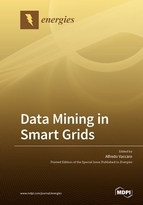Data Mining in Smart Grids
A special issue of Energies (ISSN 1996-1073). This special issue belongs to the section "A1: Smart Grids and Microgrids".
Deadline for manuscript submissions: closed (30 March 2020) | Viewed by 16041
Special Issue Editor
Interests: power systems analysis; reliable computing; decentralized optimization; self-organizing sensor networks; renewable power generators
Special Issues, Collections and Topics in MDPI journals
Special Issue Information
Dear Colleagues,
Effective smart grid operation requires rapid decisions in a data-rich, but information limited environment. In this context, the grid sensors data-streaming could not provide the system operators with the necessary information to act on in the time frames necessary to minimize the impact of the disturbances. Even if there are fast models that can convert the data into information, the smart grid operator must deal with the challenge of not having a full understanding of the context of the information, and, therefore, the information content cannot be used with any high degree of confidence.
To address this issue, data mining has been recognized as the most promising enabling technology for improving decision-making processes, providing the right information at the right moment to the right decision maker.
This Special Issue will be focused on the emerging methodologies for data mining in Smart Grids. In this area, it will address many relevant topics, ranging from methods for uncertainty management, to advanced dispatching.
This Special Issue not only focuses on methodological breakthroughs and roadmaps in implementing the methodology, but also presents the much-needed sharing of the best practices.
Potential topics include, but are not limited to, the following:
- Fuzziness in smart grids computing
- Emerging techniques for renewable energy forecasting
- Robust and proactive solution of optimal smart grids operation
- Fuzzy-based smart grids monitoring and control frameworks
- Granular computing for uncertainty management in smart grids
- Self-organizing and decentralized paradigms for information processing
Dr. Alfredo Vaccaro
Guest Editor
Manuscript Submission Information
Manuscripts should be submitted online at www.mdpi.com by registering and logging in to this website. Once you are registered, click here to go to the submission form. Manuscripts can be submitted until the deadline. All submissions that pass pre-check are peer-reviewed. Accepted papers will be published continuously in the journal (as soon as accepted) and will be listed together on the special issue website. Research articles, review articles as well as short communications are invited. For planned papers, a title and short abstract (about 100 words) can be sent to the Editorial Office for announcement on this website.
Submitted manuscripts should not have been published previously, nor be under consideration for publication elsewhere (except conference proceedings papers). All manuscripts are thoroughly refereed through a single-blind peer-review process. A guide for authors and other relevant information for submission of manuscripts is available on the Instructions for Authors page. Energies is an international peer-reviewed open access semimonthly journal published by MDPI.
Please visit the Instructions for Authors page before submitting a manuscript. The Article Processing Charge (APC) for publication in this open access journal is 2600 CHF (Swiss Francs). Submitted papers should be well formatted and use good English. Authors may use MDPI's English editing service prior to publication or during author revisions.






